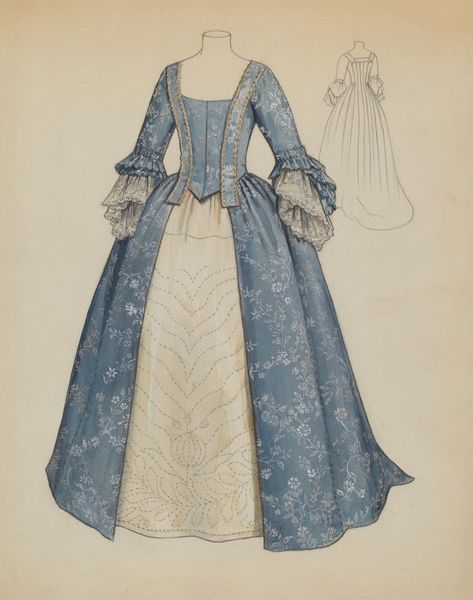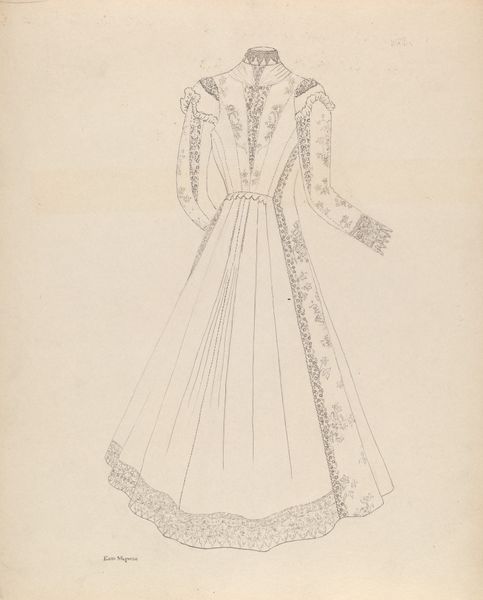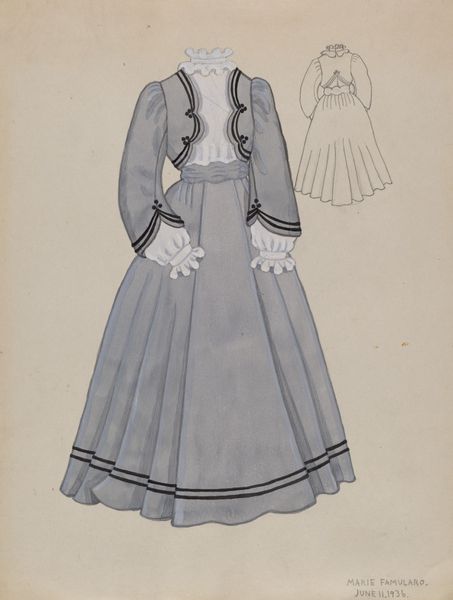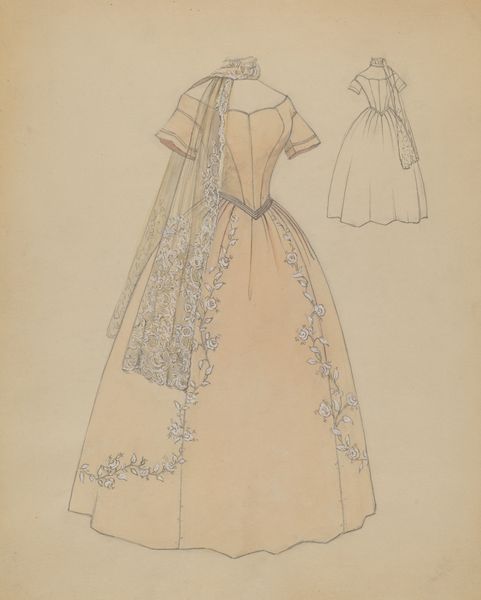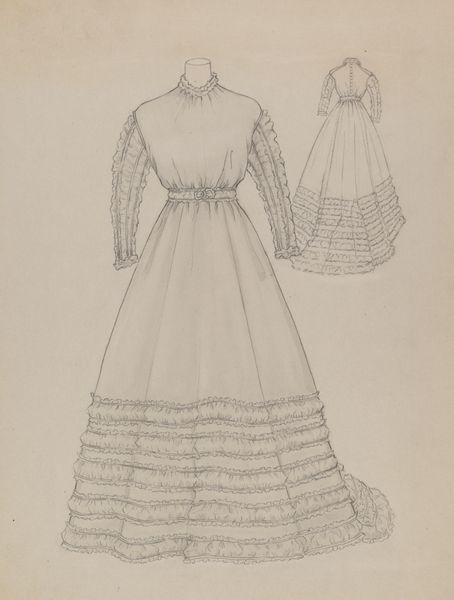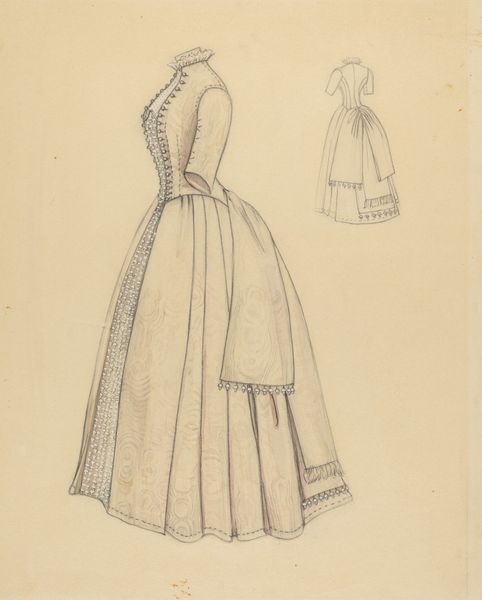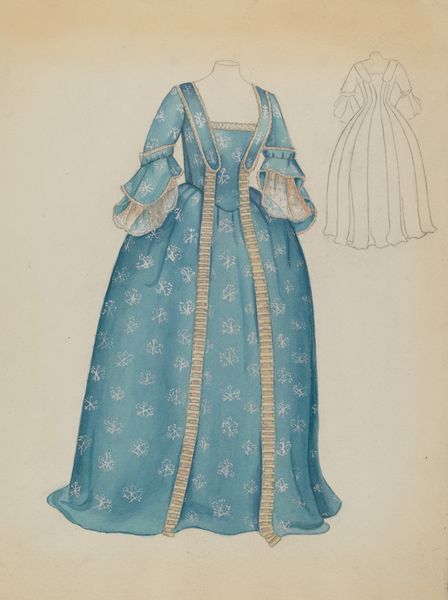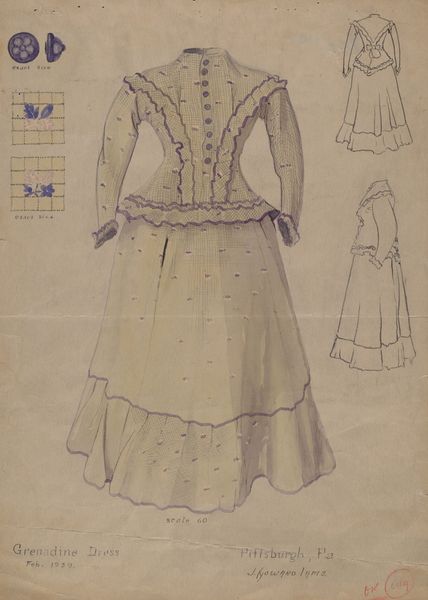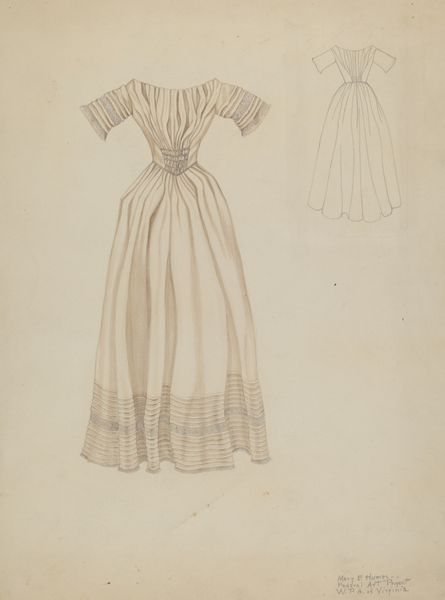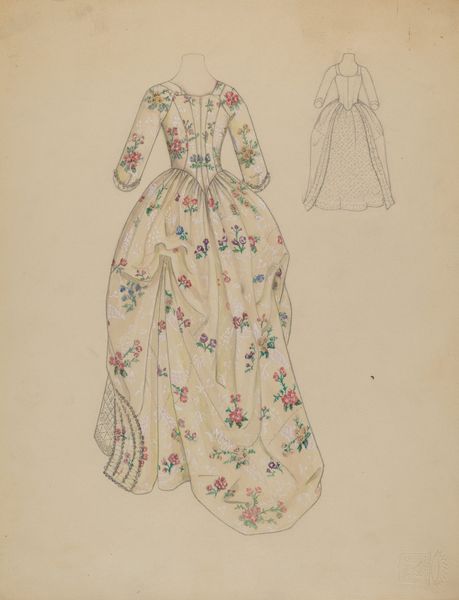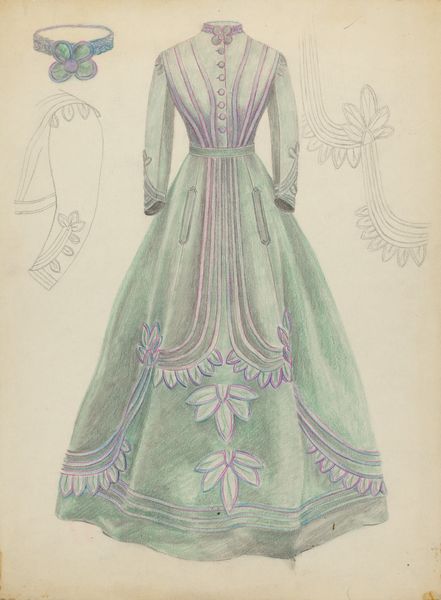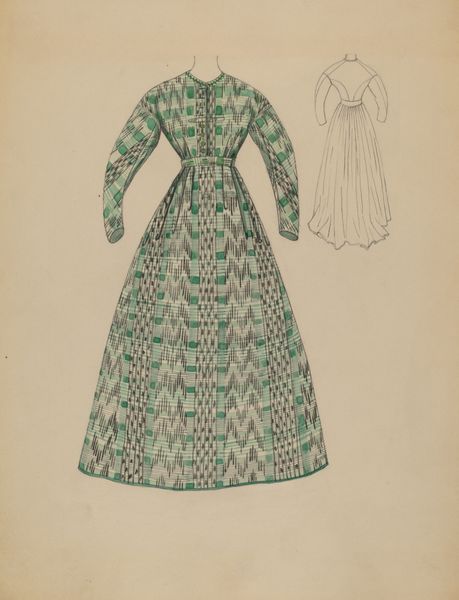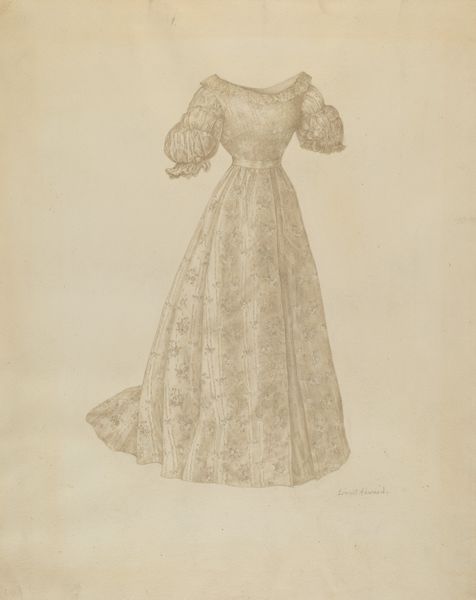
drawing, paper, pencil
#
portrait
#
drawing
#
toned paper
#
light pencil work
#
pencil sketch
#
sketch book
#
paper
#
personal sketchbook
#
historical fashion
#
pencil
#
sketchbook drawing
#
decorative-art
#
fashion sketch
#
sketchbook art
#
clothing design
Dimensions: overall: 30.4 x 22.8 cm (11 15/16 x 9 in.)
Copyright: National Gallery of Art: CC0 1.0
Curator: Let’s turn our attention to “Dress,” a pencil drawing on paper from around 1936, by Nancy Crimi. What's your initial impression? Editor: It strikes me as rather formal. The composition is centered, almost symmetrical. The lines, mostly light pencil work, define a high-necked, long-sleeved dress, which gives off an aura of reserved elegance. Curator: Absolutely. It’s interesting to consider this within the context of the 1930s. This was a period defined by both economic hardship and burgeoning industrial production. The use of paper, the simplicity of pencil – perhaps it reflects a resourcefulness necessitated by the times? Editor: A valuable point! Formally, the pale blue decorative trim catches my eye. The artist utilizes delicate line work, giving an illusion of depth to the adornments and floral elements near the hem. Curator: And it makes me wonder, where was this dress intended to be worn? The details suggest an aspiration towards higher social circles, perhaps a debutante gown? Consider the labor that would have gone into producing such a design – the sewing, the fitting. This sketchbook drawing offers a small window into that entire production chain, all captured in pencil and paper. Editor: Indeed, one can perceive Crimi’s consideration to form through careful rendering. Notice, the texture of the fabric – particularly at the skirt – through varied light and shadow. There is also the partially finished second dress near the top; one dress echoes the form of the other through transparent line work. Curator: The decision to include the second sketch raises questions about the artist’s process. Is it an abandoned idea or a variation? Perhaps Crimi experimented with ways this garment could be mass-produced or altered depending on fabric availability and costs, pointing toward pragmatic factors in design. Editor: I see it, as an exploration of shape within an already structured form – a play of lines. It encourages us to perceive what the artist found aesthetically compelling – this unique silhouette, rendered as its most beautiful self through pencil and paper. Curator: Thinking about materials, production, and the artist's choices adds rich layers to the work! Editor: Yes, indeed! There are so many intricate elements within that silhouette; it would take hours to exhaust the variations of shape that give its composition meaning.
Comments
No comments
Be the first to comment and join the conversation on the ultimate creative platform.
